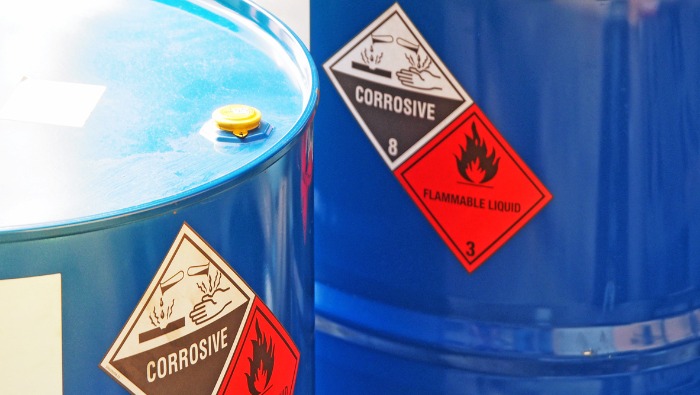The Occupational Safety and Health Administration (OSHA) recently announced that an Atlanta, Georgia, recycling company will pay over $311K after an investigation revealed that the company repeatedly exposed workers to chemical hazards in the workplace. Additionally, the company did not provide a sufficient hazard communication program. This incident marks the third time OSHA has cited the company for similar violations. According to OSHA’s top ten violations list for fiscal year 2021, general industry hazard communication remains among the top four most-cited violations in the workplace.
OSHA Inspection Reveals Exposure to Chemical Hazards
In December 2021, an OSHA inspection discovered that the Atlanta company, TAV Holdings Inc., failed to provide workers with safety data sheets for all chemicals used at the facility. Additionally, they did not list chemicals in the company’s hazard communication program. In detail, TAV Holdings Inc. failed to:
- Install a proper fall protection system around unprotected sides of a pit.
- Provide guarding on rotating parts and ingoing “nip and pinch” points on equipment.
- Ensure exit routes were unobstructed and post signs showing correct routes to obscured exits.
- Clarify techniques to isolate energy sources on machines within energy control procedures.
- Properly train employees on hazardous energy sources related to equipment.
- Mark electrical panels to indicate their purpose and enclose a control panel.
- Provide audiometric testing or annual training on noise hazards and provide hearing protection to employees.
- Conduct annual training on using respirators, as well as provide fit tests for employees.
OSHA Hazard Communication Plans (29 CFR 1910.1200)
A hazard communication plan (29 CFR 1910.1200) is one of the six written safety plans employers need for OSHA inspections. Generally, Section 1910.1200 ensures that the hazards of all chemicals produced or imported are appropriately classified. The standard also requires that employers and employees receive the proper hazard information.
Chiefly, Section 1910.1200(e) requires employers to develop, implement, and maintain a written hazard communication plan at each workplace. Specifically, the written safety plan must describe how employers will meet criteria concerning labels and other forms of warning, safety data sheets, and employee information and training. The written safety plan must also include the following:
- a list of the hazardous chemicals known to be present in the workplace – chemicals should be noted using a product identifier referenced on the appropriate safety data sheet.
- the methods the employer will use to inform employees of the hazards of non-routine tasks – this includes the hazards associated with chemicals contained in unlabeled containers in their work areas.
Employers must make any written safety plan covered under Section 1910.1200 available, upon request, to employees, their designated representatives, and any government entity (including OSHA).
Penalties for OSHA Standards on Chemical Hazards
In sum, OSHA inspectors found three repeated and 38 serious violations in its investigation at the Atlanta facility. As a result, the agency delivered a citation and notification of penalty tallying the fines. Penalties totaled $311,934. TAV Holdings Inc. had 15 business days from receipt of the citation to comply, request an informal conference with OSHA, or contest the findings. As of this post’s publication, OSHA has not announced what action the company took.

